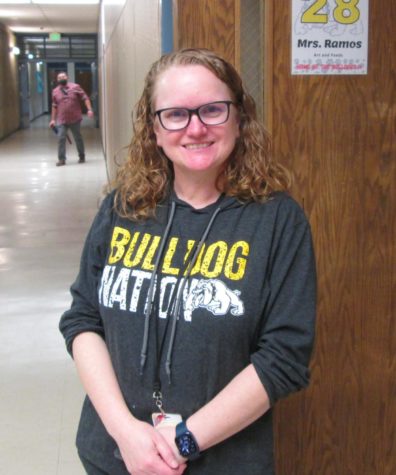Is School Ableist? How the School System Favors Neurotypical Students
Today we take a deep die into how school is ableist.
STOP! Neurodivergent/neurodiverse, and neurotypical are used a lot in this article. Neurodivergent means differing in mental or neurological function from what is considered typical or “normal”. Neurotypical is the opposite of that, having what we would consider a “normal”neurological function.
Nerodiversity; more common than you may think
Going through school on a day to day life may seem like a brainer. But for many it can be the hardest thing. Autism and neurodivergent may it seem like a large group of people, but in reality up to 30% of students enrolled are nerodivergent. According to ADHD aware, 30% to 40% of the population are nerodiverse. That’s almost half the populations that have been diagnosed with ADHD, tourettes sydrom, DID, Autism spectrum condition,
Borderline personality disorder. Bipolar disorder, Asburgers syndrom, OCD, Dyslexia, Dyspraxia and many more. Nerodivergecy is something that is not always talked about, but lots of the population experiences. Nerodiverse conditions cannot always be seen, and it can be very harmfull to put everyone with these conditions into a box, or a stereotype.
“Students with Dyslexia, ADHD, Autism, and more are considered to be neurodivergent. Public education was designed for neurotypical students and learners, but there are steps we can take to include more of our students when teaching. It’s time that we address ableism in our education system.” -Ranger Reveiw
Ranger review goes into detail about things an individual teacher can do to protect their nerodivergent students. While giving your students accommodations, and helping wherever you can is important, its also important to remember that nerodivergent students are people too, and their diagnosis does not determine how they should act, what they should look like, or what they need. Everyone is different and not everyone has a visible disability.
Invisible disadvantages.
People with nerodiverse conditions dont always have the outward appearance you would expect them to have, and often this can lead them to not get the help they need because they dont look how people think they should. According to the Department for Education’s statistics on special education needs in England, over 20% of children with special needs are labelled as having moderate learning difficulties, or getting wrongly diagnosed. Autism has seen a spike in diagnosises, because of media, and widespread awareness, but other nerodiverse conditions have not seen such a spike. While nerodiverse symptoms tend to overlap with different conditions, its important to know the differences between different conditions and the people that may be affected by them. Nerodiverse conditions show up differently on everyone, not one person looking like the next. It is important to believe someone when they say they are struggling, or when they need help. Just because they dont look like your idea of a nerodivergent individual, doesint mean they do not face everyday struggles.
School is often the hardest part of the day for nerodiverse students, whether its academic, or social disadvantages. Many autistic and ADHD/ADD students express that school was harmful for them in many ways, especially when it comes to the sensory stimulation. School is an environment that is constantly echoing noise, whether it be the school bell, morning announcements, the squeaky floors of the gym, large groups of students, and yelling students. This may not seem like a challenge for nerotypical students because it’s not. But when 30% of your population faces these difficulties, shouldent the school system learn to accomadate their nerodiverse students?
How the school system favors neurotypical students.
School age is when most diagnoses occur, when nerodivers students are seperated from nerotypical students. School is often the place that nerodiverse students experience the most discrimination, wether it be from other students, teachers, or the school itself. School often eccentuates weaknesses rather than strengths when it comes to nerodivergent students. Many teachers have expressed their wish for the school system to cater twords nerodivergent students as well as nerotypical ones. But how exactly does school discriminate twords nerodivergent students? Often the answer is in classrooms themselves. Every time you were asked to read aloud, every time you took a quiz, everytime you went to lunch. These experiences and places are catered twords nerotypical students, and often dont take nerodivergent student needs into consideration. The most common difficulty many autistic and ADHD/ADD students experience is sensory difficulties, and school is full of them. Classrooms can also be full of flickering lights that can trigger epilepsy, and full of triggers for individuals with DID. School can often be an uncomfotable envoirment for many students, and instead of fixing the whole system they give accommodations to nerodiverse students.
Accommodations: helpful or hurtful?
According to a Department of Education report, more than half of students with autism ages 6 to 21 spend upwards of 40 percent of their school day in a majority-neurotypical classroom, while about two-thirds spend 80 percent of their day in one. Often nerodivergent students are expected to adapt and learn the way we “think” they should. While accommodations are very important, and can help loads of nerodivergent students, it’s important to think of why we have them.
First, what are accommodations? Accommodations are when the school has recognized that this student’s neurodiverse condition might make it harder for them to complete the same task as their nerotypical counterparts, so they might change the time, place or the content of the task so that students may also partake in these lessons. But the question a lot of students and staff are asking; why not change the system, instead of changing the individual? That is the large problem with ablism in school. Instead of making the school system available to everyone, and comfortable with all students, they instead change the students’ plans, and the students’ learning environment to fit with what they think is a normal classroom. Accommodations are the easiest thing for students and staff to do, but that can also be the problem. Instead of facing the root problem, they tend to focus on the individual student.

Salutations! I am Lucas (look at my cool, TOTALLY real mustache). I like to Draw, Write, and be a menace to society. I am a visual artist for journalism,...




